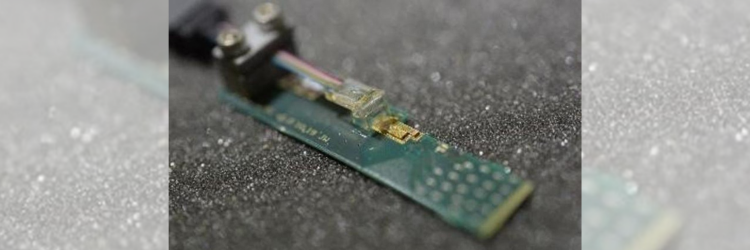Chip-based QKD Reaches Higher Transmission Speeds
Researchers created a quantum key distribution (QKD) system based on integrated photonics that transmits secure keys at unprecedented speeds. This is an important step toward real-world application of the highly secure communication method.
Quantum key distribution provides secret keys for secure communication between distant parties using the quantum properties of light to generate secure random keys for encrypting and decrypting data. The security is based on the laws of physics rather than current computational complexity communication protocols.
The goal of QKD is to simply integrate it into a real-world communications network, according to researchers at the University of Geneva in Switzerland. An important aspect is integrated photonics, which allows optical systems to be manufactured using the same semiconductor technology used to make silicon computer chips.
Published in the Optica Publishing Group journal Photonics Research, researchers describe their QKD system with all components integrated onto chips except the laser and detectors. Advantages include compactness, low cost, and ease of mass production.
Earlier, the same researchers developed a three-state time-bin QKD protocol that was carried out with standard fiber-based components to achieve QKD transmission at record high speeds. The current work aims to implement the same protocol using integrated photonics. This uses fewer components to verify when implementing or troubleshooting in a network.
The QKD systems use a transmitter to send the encoded photons and a receiver to detect them. The team collaborated with silicon photonics company Sicoya GmbH in Berlin, Germany, and quantum cybersecurity company ID Quantique in Geneva to develop a silicon photonics transmitter combining a photonic integrated circuit with an external diode laser.
The transmitter uses an external laser with a photonic and electronic integrated circuit to accurately produce and encode photons at a record speed of up to 2.5 GHz. For the receiver, a low-loss and polarization-independent photonic integrated circuit and a set of external detectors allowed passive and straightforward detection of the transmitted photons. The two components connect with a standard single-mode fiber-enabled high-speed production of secret keys.
The researchers performed a secret key exchange using various simulated fiber distances and with a 150-km long single-mode fiber and single-photon avalanche photodiodes. They also conducted experiments using single-photon superconducting nanowire detectors, which enabled a quantum bit error rate as low as 0.8%.
The researchers are now working on housing the system parts in a simple rack enclosure to allow QKD to be implemented in a network system.

